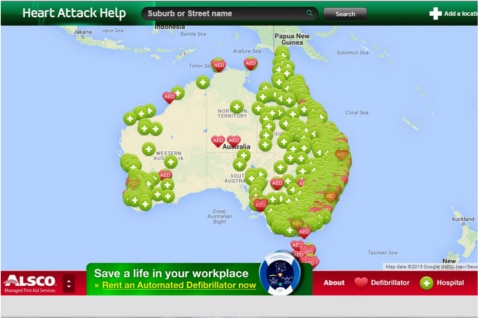What is it that we love about work? The sense of accomplishment at the end of the day, the satisfaction on clients’ faces, or perhaps your pay cheque. But whatever it is, it is only one side of the coin. There are stresses and health issues associated with workplaces, so having automated defibrillators has become an essential part of healthy and safety regulations.
Why is an AED so important? Well, the fact is that cardiovascular problems, whether caused by work or by a poor lifestyle, are very real. According to the Australia Bureau of Statistics, 15% of deaths suffered in Australia in 2010 were due to heart disease, with ischaemic heart disease the leading cause of death.
And since we typically spend so many hours in our workplace, the chances of a cardiac arrest occurring at work is high. In fact, statistics show that 80% of cases occur either at home, at work or in public places – not in a medical facility.
Why in the Workplace?
While statistics relating to general heart-related deaths across Australia are high, the risk of cardiac arrests and related illnesses occurring in the workplace is hard to ignore.
In a 2006 report from Safe Work Australia, the range of high risk occupations susceptible to cardiovascular disease included air traffic controllers, lorry drivers, cannery workers, warehouseman and rubber and plastics workers.
The report also highlighted the degree to which the working environment and stresses levels contributed to the condition. But other factors contribute too, not least personal health (not work related), lifestyle, age and hereditary influence.
And with such a high number of occupations connected with high rates of heart problems, the need to have an AED close at hand, whether in an office, on the manufacturing floor or in company vehicles is consequently higher.
It is also important to ensure that all health and safety standards are met and that staff are trained to provide CPR when necessary and in the use of a defibrillator.
Easy to Use, Easy to Maintain
Managed automated defibrillator services ensure that you don’t have to worry about keeping the machine in working order. That is done for you by trained professionals who know precisely what they are doing.
This means that your workers have the best chance possible of receiving the treatment they need in a cardiac emergency. After all, the risk of neglecting the maintenance of an AED while everyday work-related obligations are met is high.
What is more, using the expertise of professional services providers means that you get the most up-to-date AED technology at your disposal, thereby increasing the likelihood of a staff member, or even a client or visitor, being saved.
Find the Nearest Defibrillator to You
While having an automated defibrillator installed in the workplace is the fastest way to save your and your workers’ lives, the second best is knowing where the nearest defibrillator is to you.
After all, we might not be at work when an attack occurs, so knowing the nearest location could prove to be life-saving knowledge. The good news is that finding a location is now easier than ever, thanks to the first aid information provided through Heartattackhelp.org.au, a site provided by Alsco.
The site provides a map of Australia, with every location providing defibrillator facilities clearly marked. Just click on a green cross to see which hospital, clinic or health centre has AEDs, or click on the red hearts to see non-medical facilities (leisureplex, theme parks, public transport depots, shopping centres etc) that offer life-saving CPR facilities.
Be sure to check the site out, as accessing it could prove to be the difference between life and death.
Or better still, get a defibrillator installed at your workplace and save lives!
Sources:
- ‘Causes of Death, Australia, 2010’, Australian Bureau of Statisitcs – www.abs.gov.au/ausstats/abs@.nsf/mediareleasesbytitle/63AFD409CBAA7592CA25757C00272CF2?OpenDocument
- ‘Work-Related Cardiovascular Disease in Australia’, Safe Work Australia (2006) – https://www.safeworkaustralia.gov.au/system/files/documents/1702/workrelated_cardiovascular_disease_australia.pdf


LEAVE A REPLY
Your email address will not be published. Required fields are marked *
You must be logged in to post a comment.